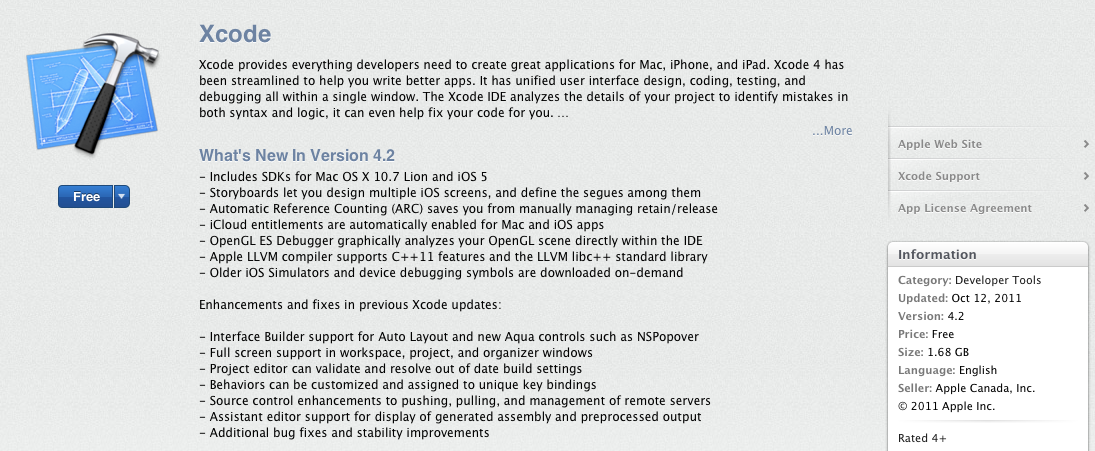
- 2011 MAC MINI GRAPHICS CARD MAC OS X
- 2011 MAC MINI GRAPHICS CARD BLUETOOTH
- 2011 MAC MINI GRAPHICS CARD MAC
2011 MAC MINI GRAPHICS CARD MAC
Like last year’s model, this mini feels rock-solid, and an internal power supply-you just connect the included thin power cord-means that it’s entirely self-contained.īut there’s at least one difference in the 2011 mini’s exterior that’s immediately noticeable: It looks like last year’s Mac mini Server. A black-plastic panel on the back hosts the computer’s ports, and a circular, black-plastic door on the bottom provides limited access to the machine’s insides. On the outside, the 2011 Mac mini looks nearly identical to its predecessor, with an enclosure that’s 7.7 inches square, 1.4 inches tall, and made from a single piece of aluminum. The mini also includes a built-in mono speaker and an Infrared receiver for the Apple Remote (not included).
2011 MAC MINI GRAPHICS CARD BLUETOOTH
In terms of wireless connectivity, the Mac mini still gives you 802.11a/b/g/n wireless, but Bluetooth has been upgraded to Bluetooth 4.0, which includes a new low-power mode. As with the 2010 model, the location of the SDXC card-reader slot on the back is at best inconvenient depending on where you place your mini, the slot may be effectively useless.

The 2011 mini’s ports and connections are otherwise identical to last year’s: one FireWire 800 port four USB 2.0 ports a gigabit (10/100/1000BASE-T) ethernet port, an SDXC card-reader slot, and auto-sensing analog/optical-digital audio input and output minijacks (both of which support Apple’s current iPhone headset with remote and mic).

If you’re feeling especially adventurous, the Radeon HD graphics processor in the $799 mini can drive two Thunderbolt displays, daisy-chained, while still handling a third display on the HDMI port, although you shouldn’t expect amazing performance. As with other current Macs, you can connect DVI and VGA displays with the appropriate adapters-only an HDMI-to-DVI adapter is included-and the mini supports both dual-display and video-mirroring modes when two displays are connected. You still get a dedicated HDMI port that supports both video (up to 1920 by 1200 pixels) and multi-channel audio. We’ll be reviewing that model separately.)īoth models replace last year’s Mini DisplayPort port with a Thunderbolt port that supports both video (resolutions up to 2560 by 1600 pixels) and data connections, as well as Mini DisplayPort displays. (The Mac mini is also available in a server version starting at $999. For $799, Apple ups the processor speed to 2.5GHz, the RAM to 4GB, and the graphics processor to a discrete AMD Radeon HD 6630M with 256MB of dedicated memory. This gets you a 2.3GHz Intel Core i5 processor (last year’s model used the older Core 2 Duo), 2GB of RAM, a 500GB 5400rpm hard drive, and an integrated Intel HD Graphics 3000 graphics processor that shares 288MB of main memory. In a nod to the 2009 line, the Mac mini is again available in two models, with the less-expensive mini starting at $599. Though the iMac is clearly Apple’s flagship desktop, the 2011 Mac mini is quintessential Apple: beautiful, well-engineered, forward-looking, and powerful enough for most, with at least one design decision that will leave some people wondering, “Why?” Which is to say that, like most Apple products, the new mini is compelling, but it won’t appeal to everyone.
2011 MAC MINI GRAPHICS CARD MAC OS X
The latest version of the Mac mini, officially called the Mac mini (Mid 2011) and released along with Mac OS X 10.7 (Lion), sticks with last year’s design, but it gets a price cut while overhauling what’s inside. It also came with a higher price tag: The least-expensive 2010 mini clocked in at $699. But while the design of the 2010 mini was a dramatic change, that model received mainly modest upgrades on the inside: a moderately faster processor and a better graphics chip. With the Mac mini (Mid 2010), released in June 2010, Apple gave its smallest Mac an aesthetic overhaul, replacing the chunky, aluminum-and-white-plastic 2009 model with a sleek, aluminum-unibody model that was easier to upgrade, felt rock-solid, and sported an SD-card reader and an HDMI port (the latter pleasing AV buffs immensely).


 0 kommentar(er)
0 kommentar(er)
